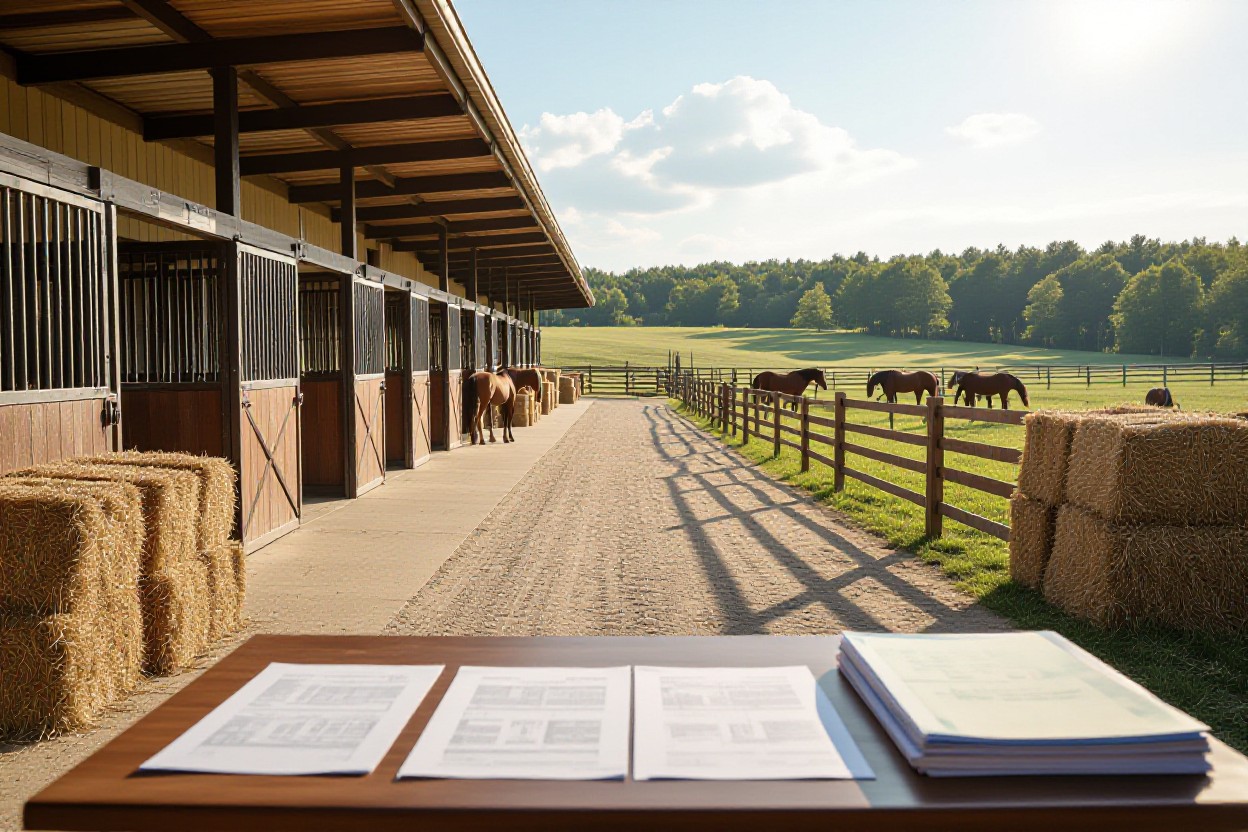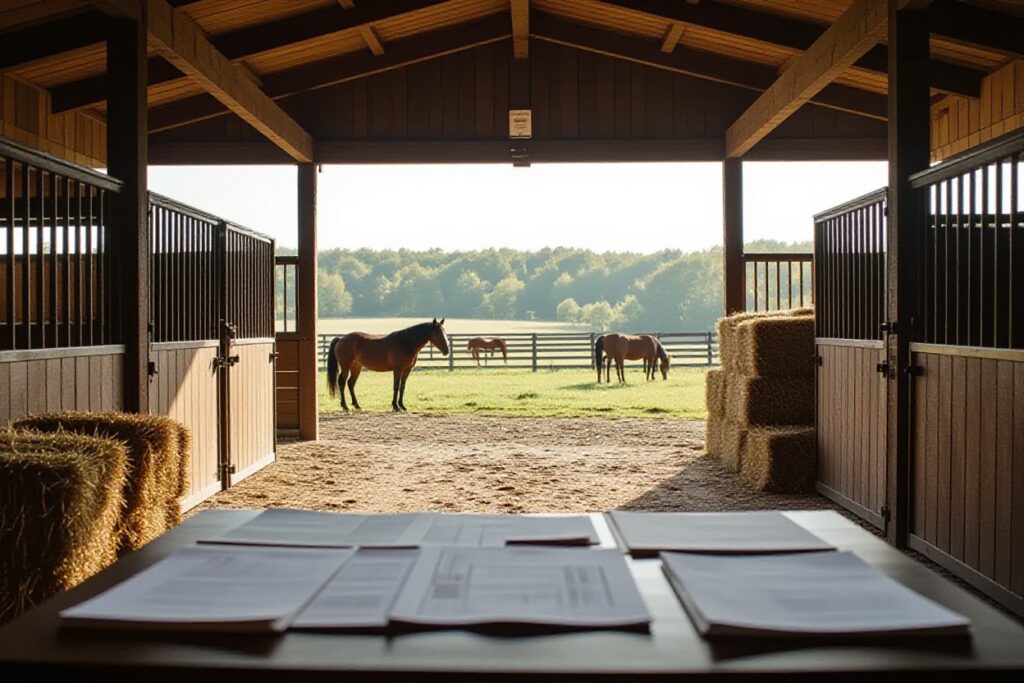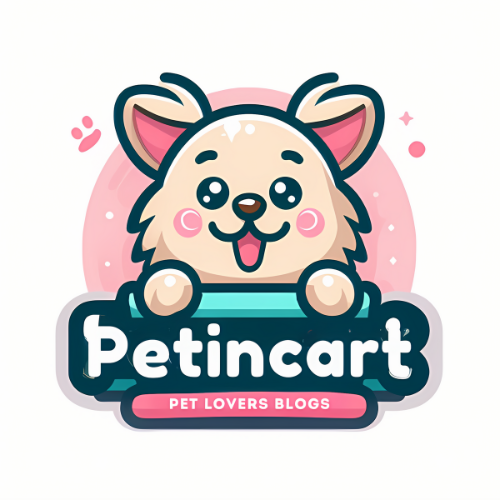Legal responsibilities you face as a stable owner are summarized by the term legal responsibilities horse stable owner, and demand mastery of liability laws, insurance requirements and strict injury protocols to reduce dangerous incidents and protect your operation; this guide gives authoritative steps on waivers, zoning, employee rules, boarder contracts, veterinary standards and property compliance so you can manage risk and maintain safe, profitable facilities.
Legal Landscape
Overview of Regulations
You operate within a patchwork of state and local rules: state Equine Activity Liability Acts, zoning and land‑use ordinances, OSHA and wage laws for employees, and environmental/health codes for manure and runoff. For example, Texas and Florida have explicit EALA protections, while many municipalities impose setbacks and waste‑management plans. Liability exposure is shaped by tort law and contract terms; effective compliance relies on permits, posted warnings, waivers, and appropriate insurance.
Importance of Compliance
Noncompliance opens you to civil suits, regulatory fines, and insurer actions; courts can set aside waivers for negligence or gross misconduct and agencies may revoke licenses. After incidents insurers commonly audit and may raise premiums or deny claims. Lawsuits, license revocation, and claim denials are realistic outcomes that materially affect your operation and assets.
You should actively manage risk: carry at least $1M per occurrence general liability (many operators prefer $2M aggregate), require written waivers and signed boarder agreements with clear 30‑day termination and payment clauses, post warning signs, and document staff training and facility maintenance. Report serious injuries and vet calls promptly—industry practice is 24–72 hours—and maintain injury logs, vet records, inspection checklists and signed contracts to defend against claims and satisfy insurers and regulators.
Liability & Risk Management
Understanding Liability Risks
You face a mix of legal exposures: premises liability for hazardous footing or fencing, negligence claims when training or supervision fails, and contractual disputes with boarders. Equine activity statutes in many states shift duty of care but do not eliminate exposure for willful or grossly negligent conduct. Typical claims involve falls, kicks, and post-operative complications; settlements and judgments can exceed six figures, so quantify risks and document safety practices meticulously.
Implementing Risk Management Strategies
Start by requiring comprehensive waivers, maintaining $1M+ general liability and appropriate equine mortality policies, and enforcing PPE and tack inspections. Institute clear boarder agreements that allocate responsibilities for routine care and injury notification. Train staff on emergency response, keep signed incident reports, and post conspicuous warnings where risks are obvious. These steps reduce exposure and strengthen defenses if litigation arises.
Operationalize risk control with concrete measures: perform weekly facility inspections, schedule arena and fence maintenance quarterly, and retain maintenance logs for at least 7 years. Implement an Emergency Action Plan with vet and ambulance contacts, conduct staff training of 8–16 hours annually, and audit boarder compliance monthly. Operators who apply these protocols typically see fewer claims and stronger insurance outcomes because documentation and consistency limit both actual hazards and legal vulnerability.

Insurance Requirements
Types of Insurance Coverage
You should maintain layered policies: general liability for spectator or rider injury, property/commercial for barns and tack, workers’ compensation when you employ staff, equine liability where statutes apply, and care, custody & control or bailee’s coverage for boarded horses. Limits vary by activity and state; many operators carry $1,000,000 per occurrence as a baseline. This mix commonly includes endorsements for lessons, clinics and off‑site transport.
- General liability — covers third‑party bodily injury and property damage (common 1M/1M limits).
- Property/commercial — replacement cost for barns, arenas, tack and tractors.
- Workers’ compensation — statutory coverage required if you hire staff, varies by state.
- Equine liability — interacts with state equine activity statutes and waivers.
- Care, custody & control — covers horses in your charge; often excluded from GL and needs endorsement.
| General liability | Covers visitor injuries and legal defense; standard limits: $1,000,000 per occurrence, $2,000,000 aggregate in many policies. |
| Property/commercial | Insures buildings, equipment and feed; choose replacement cost for barns to avoid underinsurance after fire or storm. |
| Workers’ compensation | Mandatory in most states for employees; covers medical, lost wages — failure to carry can trigger penalties and employer liability. |
| Equine liability | Policy language must reflect state equine activity statutes; exclusions are common, so confirm defense of claims and waiver recognition. |
| Care, custody & control | Covers boarded horses’ injury or loss; claims can exceed $50,000 per animal, so verify sublimits and endorsements. |
Assessing Insurance Needs
Start by inventorying your assets: count horses, stalls, tack value, and annual revenue from boarding, lessons, or training; note whether you host shows or clinics and how often you transport horses. Estimate maximum probable loss—e.g., a barn fire could exceed $250,000—and check state rules for workers’ compensation and equine statutes to set appropriate limits.
Quantify exposures: if you board 30 horses, a single barn fire or theft could create combined claims exceeding policy sublimits; many operators therefore carry a primary GL of $1M/$2M plus an umbrella of $3M–$5M. Adjust premiums with loss‑control measures (fenced parking, fire suppression, documented safety protocols) and obtain written endorsements for care, custody & control and event coverage—this reduces litigation risk and can lower rates by 5–15% in underwriting reviews.

Contracts & Waivers
You must use written contracts to define boarding terms, care levels, fees, termination (commonly a 30-day notice), access rules and emergency authority; include specifics like late fees (e.g., 5–10%), security deposits, insurance requirements and vet consent to reduce ambiguity that drives disputes and litigation.
Importance of Written Agreements
Put obligations in writing because oral promises are hard to prove and courts favor clear terms; you should list services (stall, turnout, feeding schedule, farrier/medication), payment schedules, insurance obligations and a termination clause so judges can enforce expectations rather than rely on testimony alone.
Crafting Effective Waivers
Draft waivers that are clear, conspicuous and specific about assumed risks—kicks, falls, bites—and state that state law may limit enforceability; you must avoid attempting to waive gross negligence where prohibited, require dated signatures, and include separate parental consent for minors.
Make waivers readable: use at least 12‑point font, bold headings, a labeled “Assumption of Risk” paragraph listing hazards (kicks, trampling, unpredictable behavior), a severability clause, choice of law/venue, emergency contact and vet authorization; for practical protection, renew or re-sign annually and consider a sample clause such as “I acknowledge inherent risks, assume them, and release stable owner of ordinary negligence” while checking state equine activity statutes.

Property & Zoning
You must align your stable’s site use with local zoning and land-use rules, securing any required conditional use or special permits, mapping setbacks, waste disposal, and access points on site plans; failure to comply can lead to fines, stop-work orders, or forced closure. Include manure management, setbacks from watercourses, and traffic impacts in applications, and document approvals from planning, health, and environmental agencies to defend against neighbor complaints or enforcement actions.
Zoning Laws and Regulations
Many municipalities place equine operations in agricultural or rural-residential zones but still require permits, site plans, and noise/odor controls; typical setbacks run from 25–100 ft, and local codes often limit density (commonly ~1–2 horses per acre as a planning benchmark). You should verify municipal code sections for conditional use permits, stormwater and parking standards, and any required public notice or neighbor consent to avoid violations.
Property Owner Responsibilities
You must keep the physical premises safe: maintain secure fencing (commonly 4–5 ft for horses), ensure stall sizes of at least 12×12 ft for adult horses, provide clear egress and aisle widths (typically 10–12 ft), and control manure, feed, and hazardous storage to reduce injury and legal exposure. Prompt repairs, documented inspections, and visible safety signage reduce premises-liability risk.
Expand obligations by setting inspection schedules and records: inspect pastures daily, check fencing monthly, perform weekly manure removal and composting away from waterways, and log repairs, vet calls, and training. Draft boarder contracts allocating routine-care duties, maintain emergency contact lists, and train staff on evacuation, fire extinguisher locations, and confined-space procedures to limit liability and support insurance claims.
Employee Regulations
Your role in employee regulations intersects payroll, classification, safety and insurance; as part of your legal responsibilities horse stable owner, you must maintain I-9/W-4 records, properly classify workers as W-2 or 1099, carry required workers’ compensation, and implement written safety policies that address equine risks, manure handling and equipment maintenance to limit liability and workplace injuries.
Labor Laws for Stable Owners
You must follow the Fair Labor Standards Act baseline—federal minimum wage of $7.25/hr and overtime at 1.5× after 40 hours—while complying with any higher state rates; verify whether farm/livestock exemptions apply, keep accurate time records, and ensure payroll taxes and unemployment insurance are paid to avoid wage-and-hour claims.
Employee Rights and Safety Standards
Employees are entitled to a safe workplace: provide PPE (helmets, boots, gloves), hazard communication/SDS for chemicals, training in handling and emergency response, and prompt injury reporting; carry workers’ comp and post OSHA/required notices to protect staff and reduce exposure to negligence claims.
Implement a written safety program with a checklist: daily barn inspections, documented training (recommend 4–8 hours initially) on horse behavior and emergency evacuation, quarterly toolbox talks, and vaccination guidance (e.g., tetanus policy). Maintain SDS binder, log incidents within your state’s required timeframe, keep OSHA 300 records if you have >10 employees, and audit PPE/equipment monthly. These steps establish defensible compliance, lower claim frequency, and demonstrate that you prioritized both employee rights and hazard mitigation.
Emergency Protocols
You must maintain written, actionable emergency protocols covering fire, severe weather, disease outbreaks, and injury response to meet your legal responsibilities as a horse stable owner. Include site maps, utility shut-offs, trailer access points and a posted incident contact list with at least 5 emergency numbers. Conduct documented drills, review plans after any incident, and keep records for insurance and litigation; courts often weigh the existence and upkeep of protocols when assessing liability.
Developing Emergency Plans
Draft a clear plan that assigns roles, lists evacuation routes and secondary refuge areas, and specifies equipment locations (extinguishers, AEDs, halters). Coordinate with local fire and animal control, secure a mutual aid agreement, and schedule a full plan review annually. Make sure maps are visible at all barn entrances and that utility shut-off procedures are written to allow responders to act without delay.
Training Staff for Emergencies
Train employees at hire and refresh training at least annually, with practical drills every 6 months to practice haltering, loading, and low-light evacuations. Include human first aid/CPR, fire extinguisher use, and the chain-of-command for incident reporting. Keep signed training logs to demonstrate compliance with employment and safety obligations in disputes.
Expand training with scenario-based exercises: simulate a barn fire, a loose stallion, or mass colic to test decision-making under stress and time targets (for example, aim to evacuate priority horses within 10 minutes). Use checklists, role assignments, and after-action reports; then incorporate lessons learned into updated protocols. Also arrange periodic site walkthroughs with local responders so your access, hydrants and turnout plans are validated and documented for legal defense.
Conclusion
Following this comprehensive guide, you will be able to navigate the legal responsibilities horse stable owner faces, implementing robust liability, insurance, zoning, employee, contract, injury response, and veterinary protocols so your operation remains compliant, minimizes risk, and protects horses, staff, boarders, and your business reputation.
FAQ
Q: What are the core legal duties and liabilities of a stable operator under the topic “Legal Responsibilities of a Horse Stable Owner: Complete Guide”?
A: The legal responsibilities horse stable owner must understand fall into several interlocking doctrines: premises liability, animal-owner liability, negligence, statutory protections (such as equine activity statutes and recreational-use statutes), and contract-based duties to boarders, riders, employees, and visitors. In practical terms those doctrines translate into specific obligations and exposure points.
Premises liability and negligence: As the owner or operator you owe a duty to exercise ordinary care to maintain safe conditions, warn of known hazards, and conduct reasonable inspections. The standard varies by the status of the visitor (invitee, licensee, trespasser) and by applicable statutes. Foreseeable hazards common in stables—broken fencing, unsafe footing, unsecured gates, improperly maintained tack, poor arena drainage, inadequate lighting—create exposure if they lead to injury. Liability often hinges on notice (actual or constructive) and reasonable time to remedy hazards; regular inspection logs and prompt corrective action reduce exposure.
Animal-owner liability and strict liability: Many jurisdictions impose heightened liability for injuries caused by animals. Some apply negligence principles (owner was negligent in handling or confining an animal); others apply strict liability when an animal with known dangerous propensities injures someone. For equines, statutes or case law may limit liability if certain requirements are met (for example, if posted warnings exist or the activity falls within a protected equine activity statute). However, owners can still be liable where negligence, willful misconduct, or non-compliance with statutory prerequisites is established.
Equine activity statutes and waivers: Numerous states have adopted equine activity statutes that limit liability for ordinary risks of equine activities provided the operator meets statutory conditions—posting warning notices, obtaining signed waivers, and avoiding gross negligence or intentional misconduct. The scope and enforceability of waivers vary; many courts will enforce clear, specific waivers for ordinary risks but not for gross negligence, wanton conduct, or statutory violations. Special rules often protect minors: waivers signed by parents may be scrutinized and sometimes invalidated for certain claims.
Contractual duties to boarders and lessees: Written boarding, training, and lease agreements create contractual duties beyond common-law negligence. These agreements should specify the operator’s responsibilities for feeding, turnout, veterinary care, farrier services, tack storage, emergency procedures, billing, termination, and dispute resolution. Failure to perform contractual obligations can support breach claims and may create affirmative duties that change liability exposure (for example, if you agree to provide night checks and fail to do so).
Employee and contractor liabilities: As an employer you must comply with applicable labor, payroll, workplace safety, and workers’ compensation laws. Misclassification of trainers or barn hands as independent contractors when they function as employees can trigger tax liabilities and penalties. You may be vicariously liable for employee negligence in many jurisdictions if actions occur within the scope of employment; establishing clear job descriptions, training, supervision, and safety policies mitigates this risk.
Special statutory and regulatory duties: Zoning and land-use restrictions may limit stable operation types, boarding capacity, commercial lessons, or commercial events. Environmental and waste-disposal regulations govern manure management, runoff, septic systems, and water use. Fire codes, building codes, and animal-welfare statutes may apply to stables with commercial operations or public access.
Evidence and documentation: To defend against claims, maintain detailed records: inspection and maintenance logs, incident reports with photos and witness statements, signed waivers and contracts, vaccination and veterinary records for each animal, training records for employees, and certificates of insurance. Timely incident reporting to insurers and preserving evidence are important.
Risk allocation and insurance: Liability exposure is managed through risk allocation in contracts (indemnity clauses, limitation-of-liability provisions, insurance requirements), and through appropriate insurance coverages. However, contractual waivers and indemnities cannot always shield against statutory liabilities or willful misconduct.
In sum, the legal responsibilities horse stable owner faces are multifaceted: maintain safe physical conditions, handle and house animals responsibly, comply with statutes and regulations, draft precise contracts, supervise employees, and preserve documentation to demonstrate compliance with reasonable standards of care and statutory prerequisites.
Q: How should a stable owner draft and use waivers, insurance, and boarder agreements to reduce legal exposure while complying with the law?
A: Effective risk transfer and risk-management for the legal responsibilities horse stable owner requires carefully drafted waivers and releases, comprehensive insurance programs, and detailed boarding and service agreements that allocate duties and set expectations. Each instrument has limits and must be integrated into a broader compliance program.
Waivers and releases: Draft waivers with clear, specific language describing the activity, the risks being released, the parties involved, and the scope of the release. Include:
– Identification of the parties (stable name, owner/operator, and the participant or boarder).
– Explicit description of activities and locations covered (lessons, trail rides, rodeo events, turnout areas).
– Express assumption of ordinary risks associated with equine activities and an affirmative acknowledgement of risk.
– Clear language that the signer understands the waiver applies to minors if applicable and specifies the capacity (parent/guardian signature).
– A severability clause and signature/date lines.
Avoid boilerplate that is vague; courts favor clarity. Do not attempt to waive liability for gross negligence, intentional misconduct, or statutory violations where law forbids such releases. Include conspicuous warnings and, where statutes require, comply with posting requirements.
Enforceability considerations: State-specific law governs waiver enforceability. Some jurisdictions require separate, highlighted language for dangerous activities or limit waivers for services to minors. Obtain counsel to tailor waivers to local law and review periodically. Maintain a system to ensure waivers are executed before access is granted (online or paper) and retain signed originals.
Insurance requirements and best practices: Insurance is the primary financial protection.
– General liability: Primary coverage for third-party bodily injury and property damage on premises.
– Equine liability endorsements: Some policies exclude equine risks unless endorsed; confirm coverage for common equine risks.
– Commercial property: Buildings, tack, feed, fencing and fixed equipment.
– Commercial auto: For transport vehicles used in business operations.
– Workers’ compensation: Statutorily required in most jurisdictions for employees; covers workplace injuries.
– Umbrella/excess liability: Provides higher limits above primary policy limits.
– Equine mortality and major medical: For the horses owned by the stable; theft and elective euthanasia coverage may be separate.
– Event insurance: For clinics, shows, or rental of facilities.
Insurance program tips:
– Obtain adequate limits consistent with the size and type of operation; consider minimums for third-party liability (e.g., $1M+) and umbrella coverage depending on exposure.
– Require certificates of insurance from trainers, instructors, and boarders where appropriate; add the stable as an additional insured for contractual liability.
– Review policy exclusions (professional instruction, mounted police, interstate transport).
– Use an experienced broker familiar with equine operations.
Boarder, trainer, and client agreements: Contracts convert expectations into enforceable duties and reduce dispute risk. Key clauses include:
– Scope of services: Detailed description of feed schedules, turnout, stall cleaning, blanket changes, tack storage, turnout schedules, additional services (lessons, training).
– Fees and billing: Rates, late fees, deposit requirements, refund policies, and handling of unpaid balances.
– Termination and removal: Notice periods, grounds for removal (nonpayment, dangerous behavior, disease, non-compliance with stable rules), and procedures for removal and care in emergencies.
– Veterinary and farrier authorization: Who is authorized to obtain emergency veterinary or farrier care and payment responsibility; an explicit threshold for emergency treatment and billing authorization helps avoid disputes.
– Health requirements: Vaccination and parasite control requirements, quarantine protocols for new arrivals, and stable biosecurity rules.
– Liens and sale rights: Many states provide stable- or boarding-lien statutes allowing the operator to retain or sell an animal for unpaid fees; incorporate statutory compliance steps (notice, time periods) into the contract.
– Insurance and indemnity: Require boarders and trainers to carry personal equine liability and property insurance, name the stable as additional insured or certificate holder, and include mutual indemnity provisions allocating responsibility for third-party claims resulting from negligence.
– Dispute resolution: Choice of law, venue, and alternative dispute resolution provisions (mediation/arbitration) to reduce litigation costs.
– Limitations: Clarify the scope of the stable’s duty by specifying acts not performed (e.g., the stable does not provide 24-hour monitoring unless expressly agreed).
Operational integration: Execute contracts and waivers before services commence; maintain up-to-date contact information for emergency decision-makers; create checklists and facility binders with current insurance certificates, staff training records, veterinary contacts, and emergency procedures. Periodically audit compliance.
Provider relationships: When hiring independent trainers or contractors, use written agreements that clearly delineate responsibilities and maintain certificates of insurance. Do not misclassify employees to avoid payroll taxes or workers’ compensation obligations.
In short, waivers, insurance, and written contracts are powerful tools for managing the legal responsibilities horse stable owner, but they must be drafted to local legal standards and integrated into operational practices to be effective.
Q: What regulatory, employee, veterinary, property, and emergency protocols must a stable operator follow to limit liability and meet statutory requirements?
A: Comprehensive compliance spans municipal zoning and land-use law, environmental and waste rules, workplace safety and employment law, public health and veterinary standards, and emergency and incident-response protocols. The legal responsibilities horse stable owner include ongoing operational duties and specific procedures for incidents.
Zoning, land-use, and environmental compliance: Confirm zoning classification for equine use—agricultural, commercial, or special use—and secure necessary permits for lessons, boarding, events, or commercial stabling. Adhere to setback and density rules, septic and well permits, and any restrictions on stalls or manure storage. Environmental regulations may govern runoff, nutrient management, and disposal of euthanized animals; obtain required permits and manage manure to prevent contamination of waterways. Address odor, dust, and noise complaints through mitigation plans.
Property and facility safety standards: Maintain safe fencing, gates, and egress routes; ensure arenas, round pens, and riding surfaces are properly drained and free of hazardous objects. Store hay and feed in fire-safe areas with rodent control and proper ventilation. Maintain electrical systems and heating units to reduce fire risk. Provide first-aid kits, fire extinguishers, and conspicuous signage identifying hazards, speed limits, and stable rules. Conduct periodic facility inspections and record corrections.
Employment law, training, and workers’ compensation: Comply with wage, hour, and payroll tax requirements; classify staff correctly as employees or independent contractors. Provide workers’ compensation coverage where required and maintain OSHA-compliant practices for workplace safety related to animal handling, confined-space work (manure pits), ladder/equipment use, and chemical handling (disinfectants, fuels). Implement employee training programs for horse handling, emergency response, and PPE use. Keep personnel records and incident logs.
Veterinary care standards and animal health protocols: Maintain a valid veterinarian-client-patient relationship (VCPR) when required by law. Keep vaccination and health records for each horse: core vaccines typically include tetanus, rabies, West Nile virus, and Eastern/Western equine encephalomyelitis where applicable; additional vaccines and testing may be required by region or competition rules. Implement quarantine procedures for new or sick horses and biosecurity measures to limit disease spread. Establish written protocols for colic, lacerations, laminitis, and other common emergencies, including who has authority to consent to treatment and euthanasia in emergencies and how costs will be handled. Dispose of carcasses in accordance with local health and environmental regulations.
Incident response and reporting: Develop an incident-response plan with designated roles, local emergency contacts (ambulance, fire, police, veterinarian), and a stepwise checklist for injuries to humans and animals: secure the scene, provide first aid, call emergency services and veterinarian as appropriate, document the incident (photographs, witness statements, timeline), and notify insurance carriers promptly. Maintain an incident log and preserve relevant equipment and conditions (do not alter scene without documenting) pending investigation. For employee injuries, comply with workers’ compensation reporting timeframes and maintain OSHA-required records if applicable.
Public safety and event management: For public classes, clinics, or shows, develop participant release processes, size-appropriate supervision ratios, helmet policies, emergency access routes, parking and crowd-control plans, and ADA accommodations. Obtain event insurance and ensure instructors and judges have appropriate credentials.
Recordkeeping and auditing: Maintain comprehensive records: contracts and waivers, insurance certificates and endorsements, veterinary and vaccination records, maintenance and inspection logs, employee training and payroll records, incident reports, and compliance-related permits. Establish retention schedules and backup copies to preserve records for statutory periods and litigation potential.
Special legal mechanisms: Understand stable-lien laws that permit retaining or selling a horse for unpaid board—follow statutory notice periods and sale methods to avoid conversion claims. Be aware of consumer-protection statutes when advertising services and the potential for unfair business practice claims; ensure price lists and refund policies are clear.
Engage counsel and professionals: Because statutes, case law, and regulatory obligations vary by jurisdiction, consult an attorney experienced in equine law when drafting contracts, handling serious incidents, or planning operations that trigger complex permitting. Use a qualified insurance broker, a licensed veterinarian for protocols and VCPR requirements, and a qualified accountant or payroll service for employment compliance.
Implementation checklist (operational focus):
– Verify zoning and obtain required permits.
– Maintain current insurance: liability, property, workers’ compensation, and equine-specific coverage.
– Execute signed waivers and boarding contracts before services commence.
– Post required legal notices and stable rules conspicuously.
– Keep vaccination and veterinary records for all horses on-site.
– Conduct and document routine inspections and maintenance.
– Train staff in horse handling, emergency response, and reporting.
– Maintain incident logs, photographic evidence, and timely notification to insurers.
– Comply with lien statutes and contract termination procedures.
Adherence to these regulatory, property, veterinary, employment, and emergency protocols supports compliance with the legal responsibilities horse stable owner and reduces both operational risk and legal exposure.











